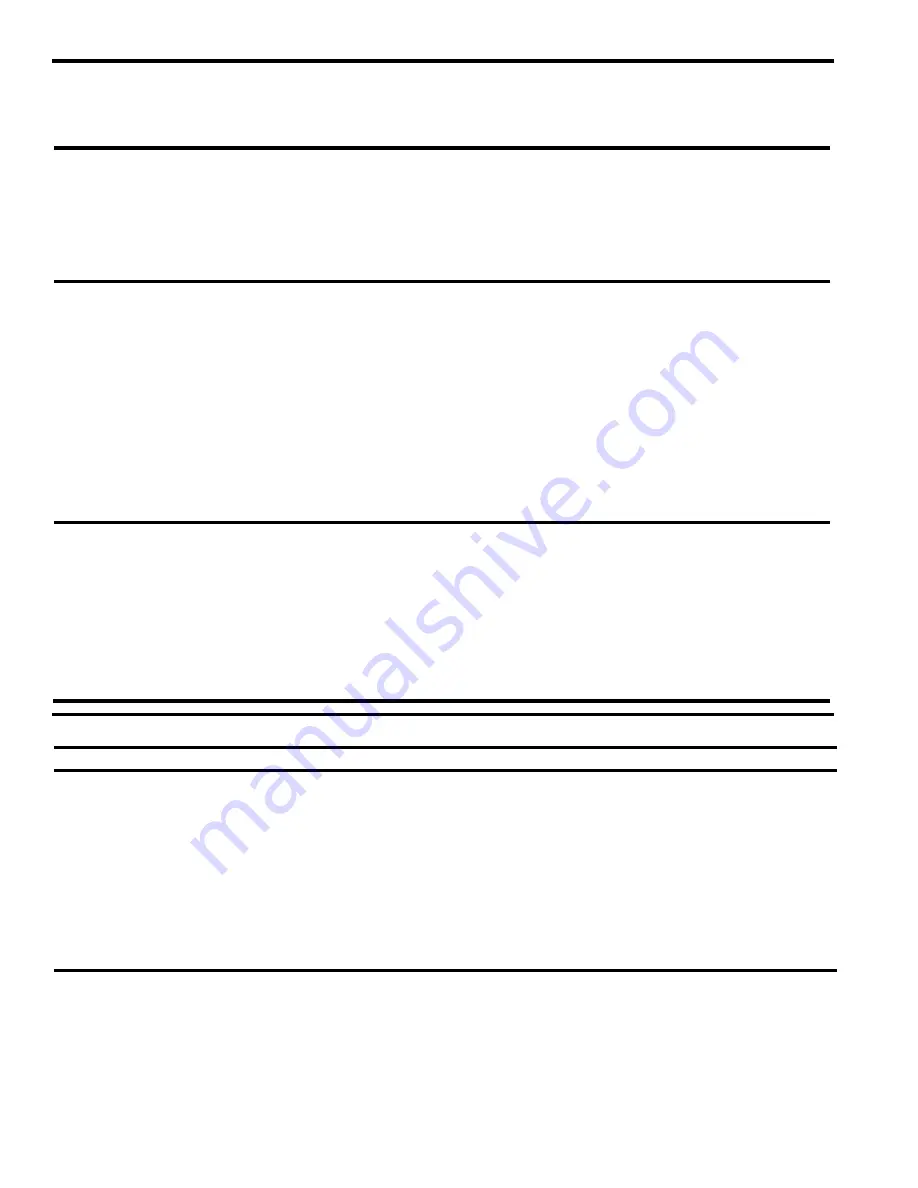
107-B00 Page 14/16
PUMP TROUBLESHOOTING
NOTICE:
Maintenance shall be performed by qualified technicians only.
Follow the appropriate procedures and warnings as presented in this manual.
LEAKAGE
Location
Probable Cause/Corrective Action
Between the head & casing
Damaged head O-ring: Inspect and replace if necessary.
Burrs/dirt in head O-ring groove or cylinder: File and clean as necessary.
Around the shaft
New Mechanical Seals: New seals may leak slightly at start up, but should
seal up shortly thereafter.
Damaged mechanical seals: Check for damaged O-rings or cracked,
scratched or worn seal faces
SHAFT BINDING
Probable Cause
Corrective Action
Burrs, dirt or foreign particles on the heads or discs.
During assembly, both heads and discs must be clean and smooth. File
any burrs or rough spots, and wipe the discs with a clean cloth and
alcohol to remove any dirt or foreign particles.
Improper locknut adjustment.
Locknuts must be adjusted properly to center the rotor and shaft between
the heads. Refer to "Locknut Installation" on Page 10.
Contaminated mechanical seal faces.
Any trace of grease or dirt on the seal faces will prevent the faces from
mating properly, causing the rotor and shaft to bind or turn hard. Use a
tissue paper & alcohol to clean the seal faces. NOTE: Apply a light oil or
suitable lubricant to bronze seal faces only.
OTHER POSSIBLE CAUSES OF SHAFT BINDING:
• Foreign particles on rotor, liner or vanes.
• Damaged vanes or rotor.
• Bent push rods.
• Liquids that "set up" when inactive.
OVERHEATING
Probable Cause
Corrective Action
Continual, full bypassing of the liquid.
Adjust the relief valve such that the pump will not bypass during normal
operation.
WARNING: Internal bypassing of liquid elevates the liquid
temperature. The internal bypass valve should only be used for brief
periods and at differential pressures below 125 psi.
For extended periods of higher pressures, the internal bypass port
must be plugged and the liquid returned back to the source.
OTHER POSSIBLE CAUSES OF OVERHEATING:
• Improper relief valve adjustment
(See "Relief Valve" on Page 5).
• Plugged discharge line.
• Closed valve.
PUMP TROUBLESHOOTING
LOW DELIVERY RATE
Probable Cause
Corrective Action
Relief valve setting too low, causing the liquid to bypass. The relief valve setting should be 20 psi (1.4 bar) higher than the
differential pressure.
OTHER POSSIBLE CAUSES OF A LOW DELIVERY RATE:
Restriction in the suction line.
Suction valve not fully open.
Resistance in the discharge line.
Air leaks in the suction line.
Damaged or worn pump parts.
Pump speed too low or too high.
Relief valve leaking.
Relief valve sticking open, or not properly seating.
Dirty
strainer.
Liner installed backwards
Vanes install incorrectly
Excessive restriction in discharge line causing RV to open.
EXCESSIVE NOISE AND VIBRATION
Probable Cause
Corrective Action
Cavitation or vaporization of the liquid resulting from
excessive vacuum on the pump due to starved
suction.
Check for:
Inlet piping too long or too small in diameter.
Strainer plugged or dirty.
Undersized or restrictive fittings, such as globe valves or partially
closed valves.
Excessive amount of elbows.


































